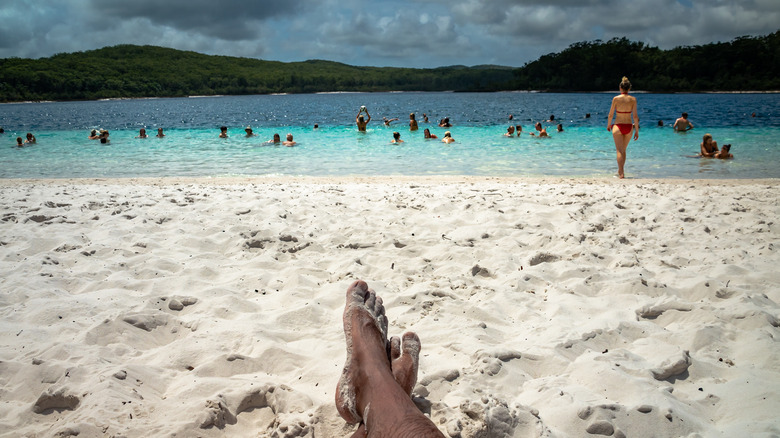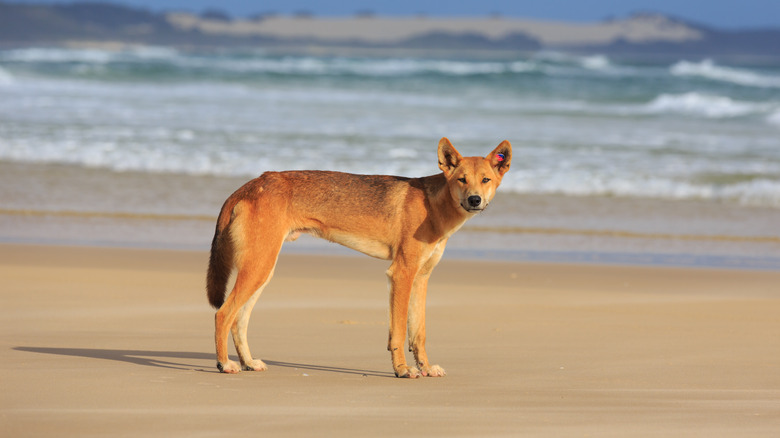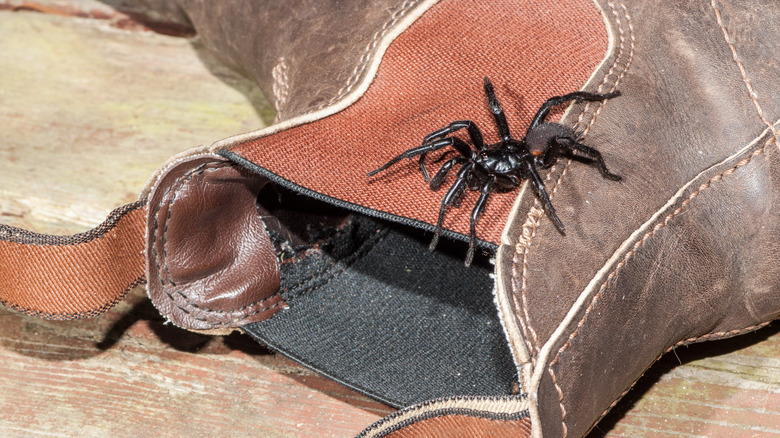This Stunning Australian Island With World Heritage Status Is A Dangerous Vacation Spot
Australia is an exciting vacation destination offering some of the best reef diving in the world and plenty of interesting wildlife for those looking for a more unique experience than the typical choices. Many people have probably also heard Australia has some scary wildlife in and out of the water. In the United States, when we think about Australia, we picture spiders as big as dinner plates and man-eating sharks and other anti-social critters that can easily "unalive" us just for fun. What many do not know is that the U.S. has more shark attacks than Australia, they just tend not to be fatal. But on Fraser Island, unsuspecting tourists have often experienced injuries and even fatalities caused by the diverse wildlife.
Fraser Island, officially K'gari, is recognized by the UNESCO World Heritage Centre because it is a perfectly picturesque Australian beach that also boasts a really neat shipwreck, the S.S. Maheno, which happened in 1935. It also happens to be the largest sand island in the world, which you can drive on for 75 miles. In totality, the island is just shy of 455,000 acres, which is more than enough room for the inhabitants of the island that include 47 types of mammals, such as dingoes, swamp wallabies, short-beaked echidnas, and many species of whales and dolphins. But that's certainly not all that lurks in the protected waters of Fraser Island (K'gari).
Say no to dinner with the dingoes on Fraser Island
Numbering between 100-200, the beautiful and feisty dingoes that call Fraser Island home are actually pretty special. This strain of dingo (Canis lupus dingo) is one of the purest surviving in the country, meaning there is very little domesticated dog in their DNA. Dingoes were originally introduced to Australia somewhere between 3,000 and 8,000 years ago, and these yellow wild dogs are interesting and fun to watch, but visitors always need to be cautious of any wild animal. People sometimes illegally feed the dingoes, which makes them dependent on humans for food. Because of this, they have aggressively harassed visitors with food before. They are not scavengers by nature and feed off bandicoots and other small animals on the island.
It is important to keep all food stored away and secured while on Fraser Island, which means packing more than the regular essentials for this trip. Many people who choose to camp on the island do so in the fenced areas and utilize the food cages provided at the campsites. Choosing to camp outside of the fenced-off campsites isn't advisable since there are many dingoes on the small island, and they know that people camping usually means food. Keep small children near you and carry a stick while strolling on the island. Do not run from a pack of dingoes, instead make yourself look as big and threatening as possible.
Deadly funnel web spiders with a side of terrifying sea creatures
As if dingoes aren't enough, the island has a few other surprises in store. In the water live great white and bull sharks, along with Irukandji and Blue Bottle jellyfish combined with deadly currents. Australia is no stranger to deadly shark attacks, and swimming is discouraged on the eastern side of the island due to strong currents and sharks. If you're elevated high enough, you may see groups of large sharks patrolling the shallow water near the shore.
Though they are on the smaller side, the Fraser funnel-web spider is an aggressive-defensive type of arachnid, but they would much rather flee than fight. It is important to shake out all clothing, sleeping bags, shoes/socks and bags. They can be identified as a black or dark brown, and up to five centimeters long from leg tip to tip with a shiny carapace and fuzzy abdomen. Their venom is extremely dangerous and is six times the strength of the Sydney funnel-web spider.
Fraser Island offers a memorable and truly unique vacation experience, but visitors need to educate themselves first about the potential dangers of the land and sea and proceed very carefully. Though this may not be a beach for tourists or surfers, there are plenty of other island and coastal getaways throughout Australia to choose from.


